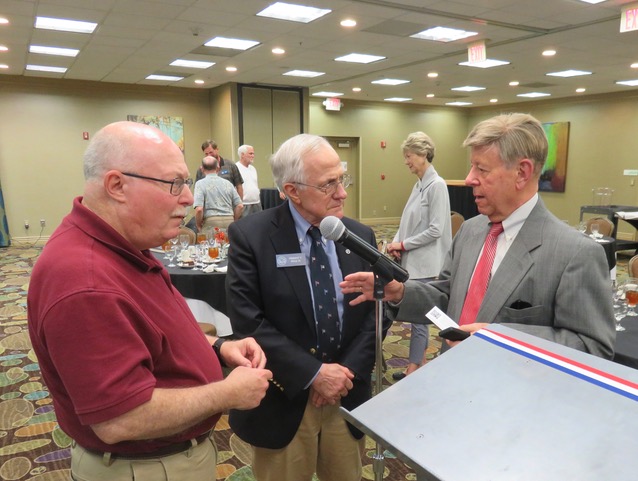
At our dinner meeting on May 22nd, Dr. Phillip R. Kemmerly, Professor Emeritus and geologist gave a very interesting program titled: "Shiloh Controversies." Dr. Kemmerly discussed three controversies about Shiloh, all related to the effects of the flood on the Tennessee River at the time of the battle. The main points of Dr. Kemmerly's talk are as follows:
- General Ulysses S. Grant was late getting to the battlefield. Dr. Kemmerly calculated that General Grant was not able to get from the Cherry Mansion in Savannah TN to Pittsburg Landing until about 9:30 a.m. By comparing the velocity of the Tennessee River at flood stage versus the velocity of the steamboat transporting General Grant, Dr. Kemmerly calculated that it would have taken General Grant 1.9 hours to reach Pittsburg Landing.
- General Lew Wallace’s Division did not dawdle on the way to the battlefield. General Grant told Wallace to wait at Crump's Landing until he received further orders, before advancing to the battlefield. Wallace received the order at 11:30 a.m. and his men began their march from Stony Lonesome at noon. However, due to a miscommunication, Wallace chose the Shunpike as his route of advance, rather than the River Road as Grant claimed he intended. Grant sent several messengers to find out what was keeping Wallace. Once advised of the position of Grant's retreating army, Wallace had to countermarch and then proceed down a crossover road. The horrible condition of this road and the difficulty in crossing flooded Snake Creek, severely hampered Wallace's advance to the battlefield. Wallace’s Division did not reach the battlefield until after sundown, at approximately 6:45 p.m. Grant never forgave Wallace for his failure to reach the battlefield on the first day. However, Wallace's men had marched as quickly as they could have given the conditions.
- The Union gunboats Tyler and Lexington were instrumental in stopping the Confederate assault on Grant’s last line of defense at the end of the first day of battle. Confederate General Chalmers' Mississippi brigade had to cross a flooded Dill Branch and then climb up a very steep ravine in order to attack Grant's last line. The Confederate troops came under heavy fire from the Union gunboats and artillery and were pinned down below the lip of the ravine. Dr. Kemmerly believes that had Chalmers' attack been successful, Grant’s army would have had to surrender. However, the Confederates were completely exhausted and fought-out by the end of the first day of battle. Grant’s army was also beginning to be reinforced by General Buell's Army of the Ohio.
We would like to thank Reverend Dave Holloway for scheduling Dr. Kemmerly to speak to our Round Table and for picking him up at the airport. We would also like to thank Dennis Garstang and his wife Mimi for spending the day with Dr. Kemmerly and his wife. Dennis and Mimi also brought the speaker and his wife to the dinner meeting and took them back to the hotel. Dr. Kemmerly was very appreciative of your hospitality.

Rev. Dave Holloway and the speaker, Dr. Kemmerly

Rev. Dave Holloway, Hibberd V. Kline III and Dr. Kemmerly
|
| |